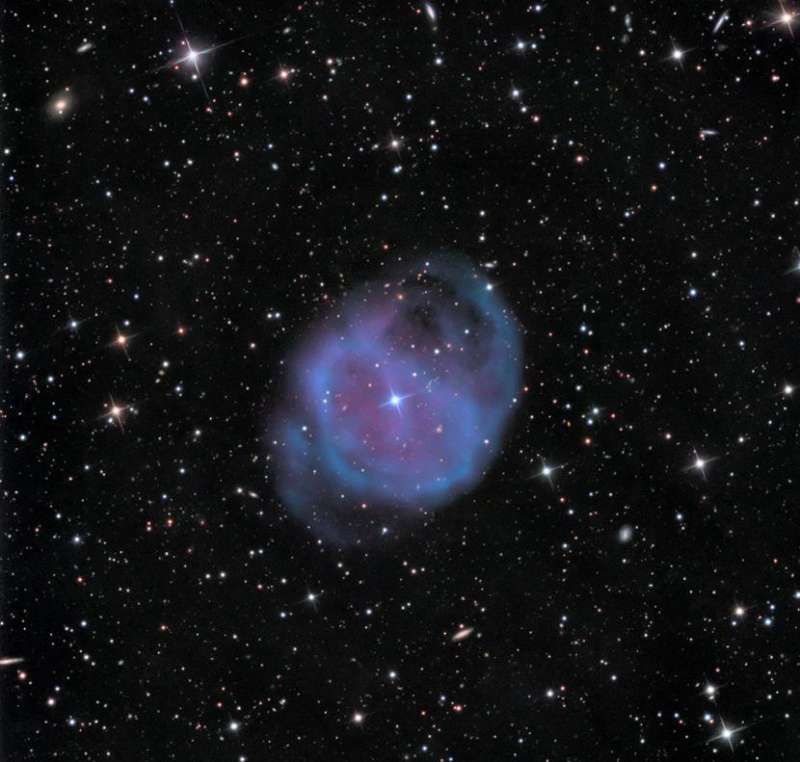
|
Explanation: The gorgeous, gaseous shroud of a dying sunlike star, planetary nebula Abell 36 lies a mere 800 light-years away in the constellation of Virgo. At that distance it spans over 1.5 light-years in this sharp telescopic view. Shrugging off its outer layers, the nebula's central star is contracting and becoming hotter, evolving towards a final white dwarf phase. In fact, in Abell 36, the central star is estimated to have a surface temperature of over 73,000 K, compared to the Sun's present 6,000 K temperature. As a result, the intensely hot star is much brighter in ultraviolet light, compared to its visual appearance here. The invisible ultraviolet light ionizes hydrogen and oxygen atoms in the nebula and ultimately powers the beautiful visible light glow.
|
January February March April May June July August September October November December |
| ||||||||||||||||||||||||||||||||||||||||||||||||
NASA Web Site Statements, Warnings, and Disclaimers
NASA Official: Jay Norris. Specific rights apply.
A service of: LHEA at NASA / GSFC
& Michigan Tech. U.
Based on Astronomy Picture
Of the Day
Publications with keywords: planetary nebula
Publications with words: planetary nebula
See also:
- APOD: 2025 August 31 B NGC 7027: The Pillow Planetary Nebula
- APOD: 2025 August 22 B A Tale of Two Nebulae
- APOD: 2025 August 5 B NGC 6072: A Complex Planetary Nebula from Webb
- APOD: 2025 July 29 B A Helix Nebula Deep Field
- APOD: 2025 July 13 B Planetary Nebula Mz3: The Ant Nebula
- APOD: 2025 June 9 B Between Scylla and Charybdis: A Double Cosmic Discovery
- APOD: 2025 May 14 B NGC 1360: The Robins Egg Nebula
